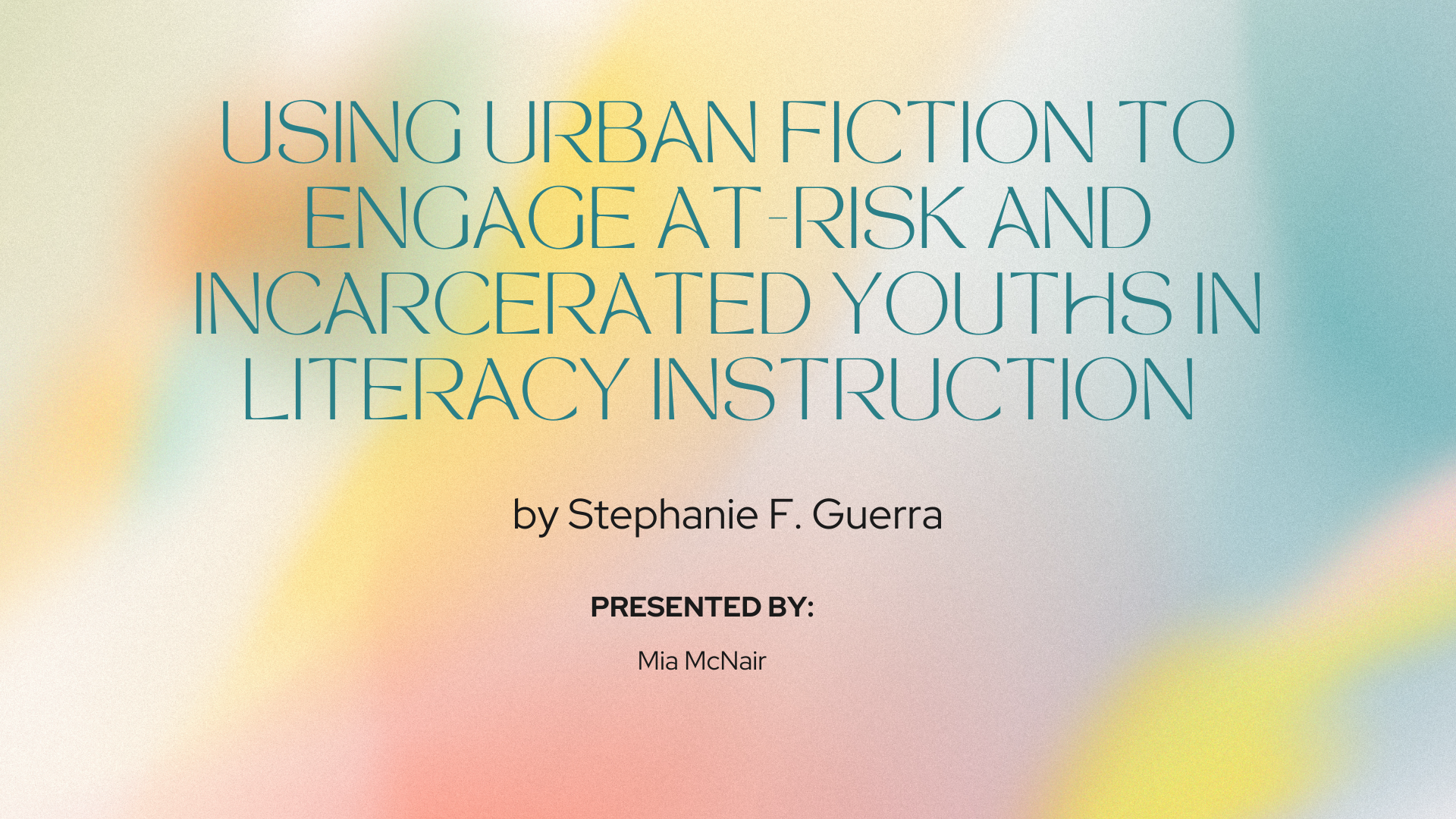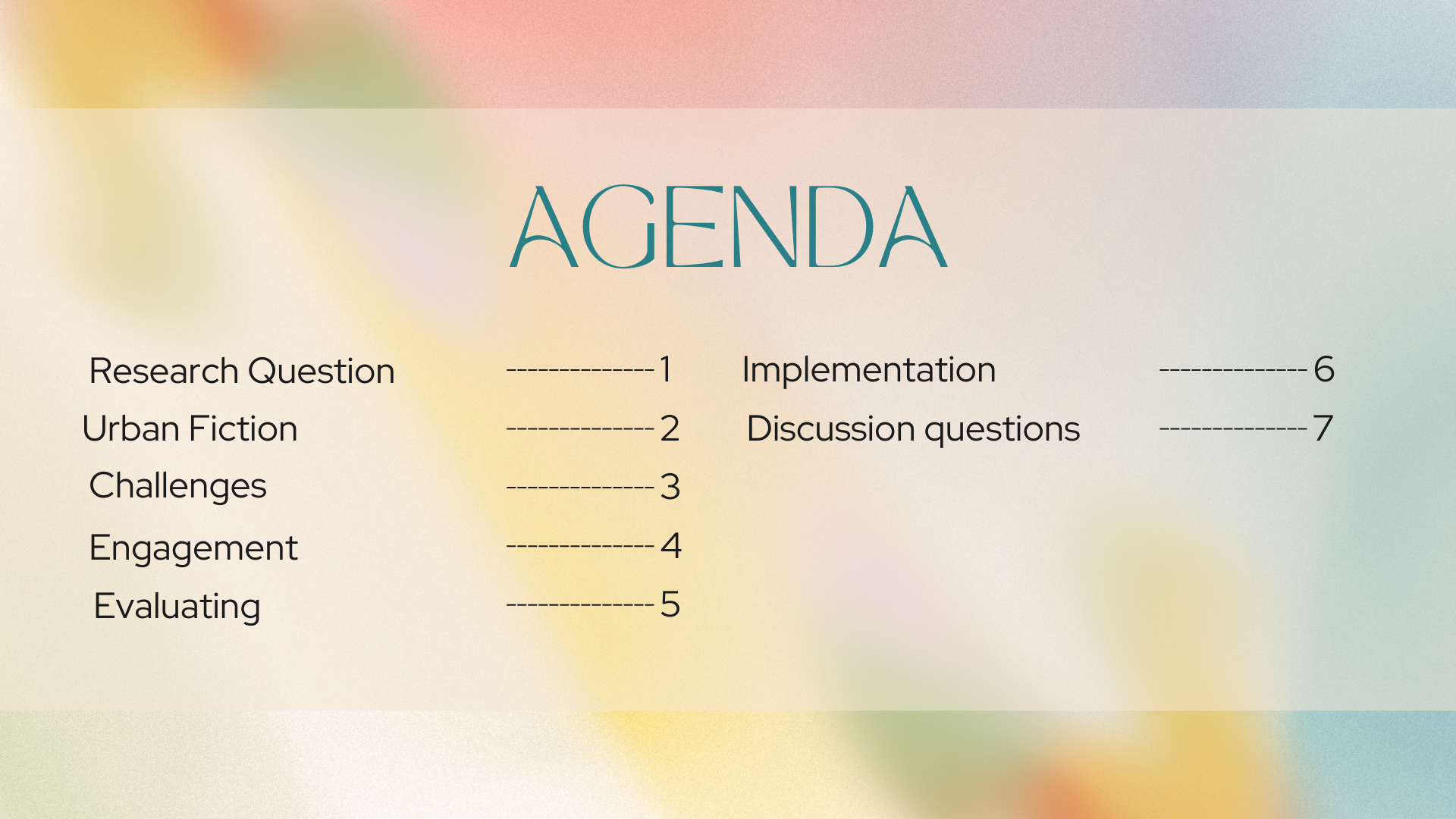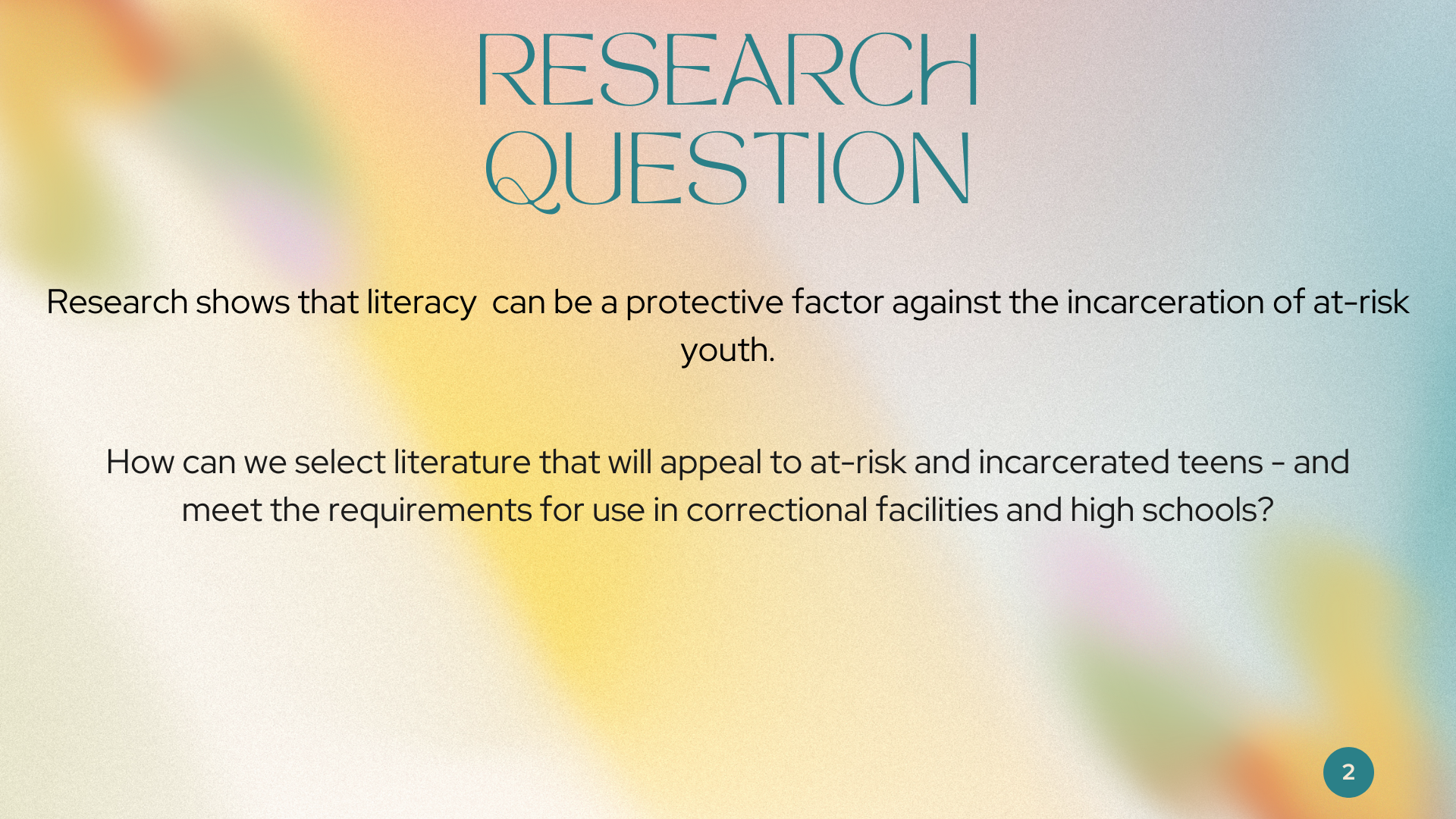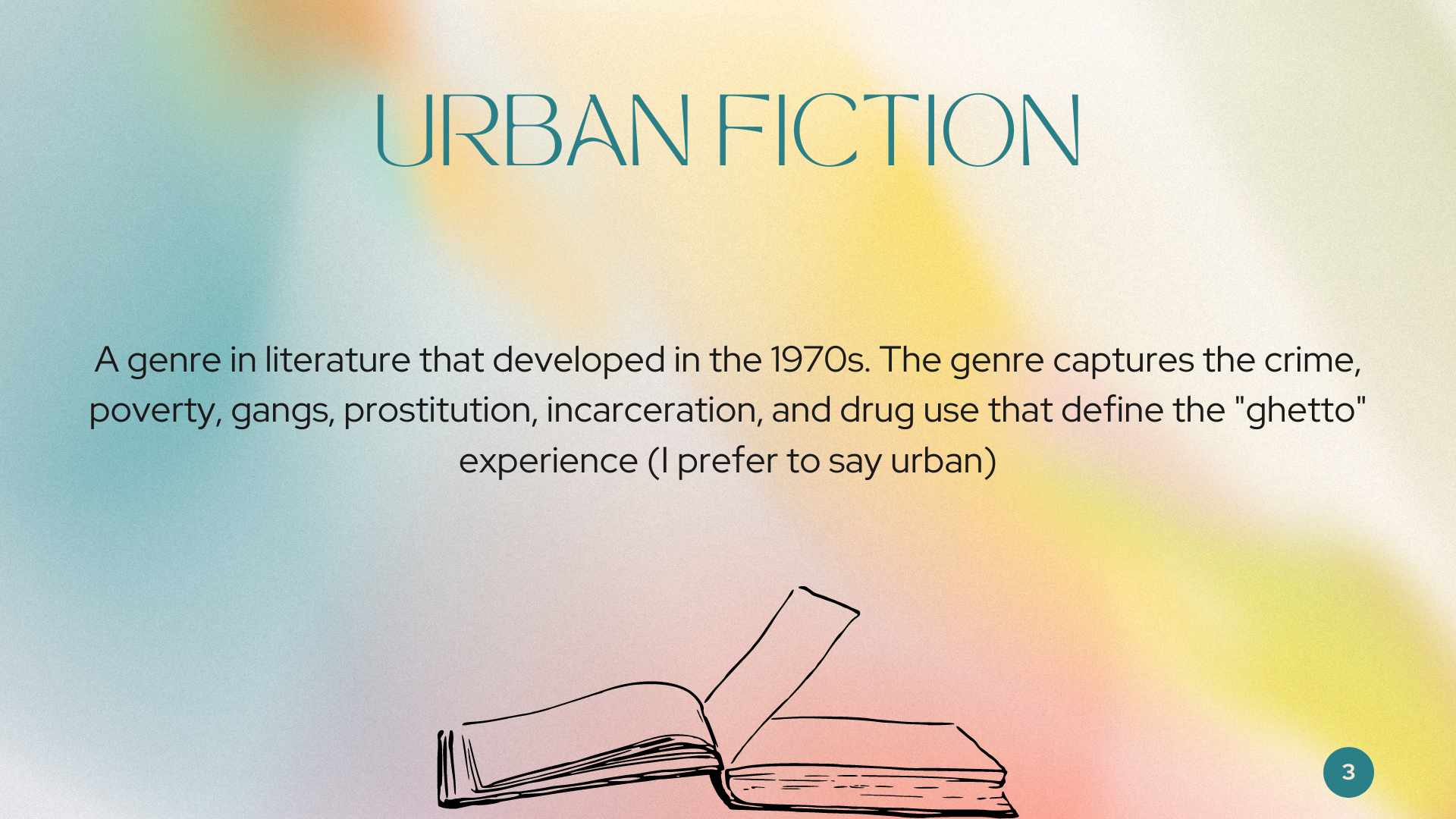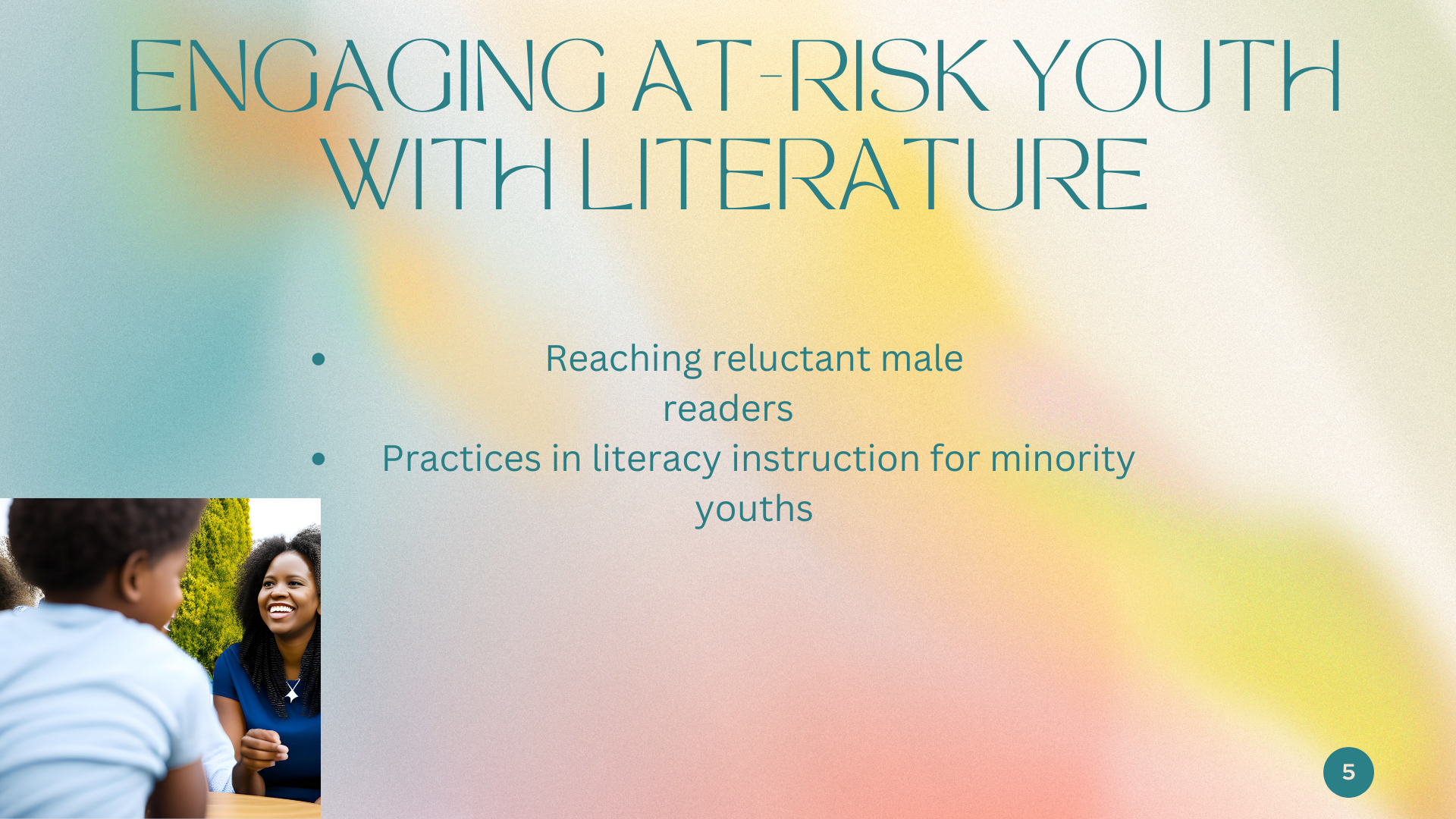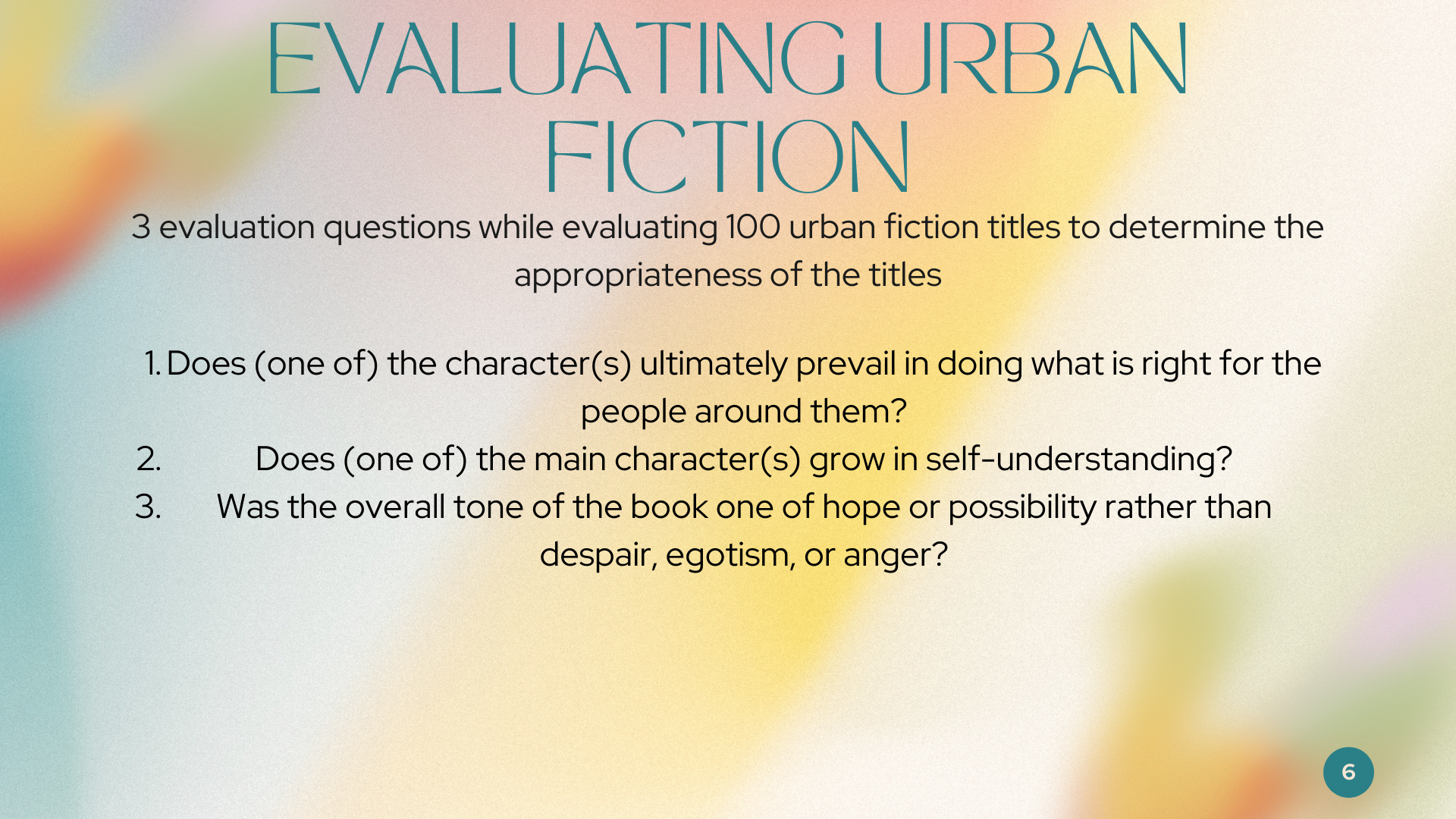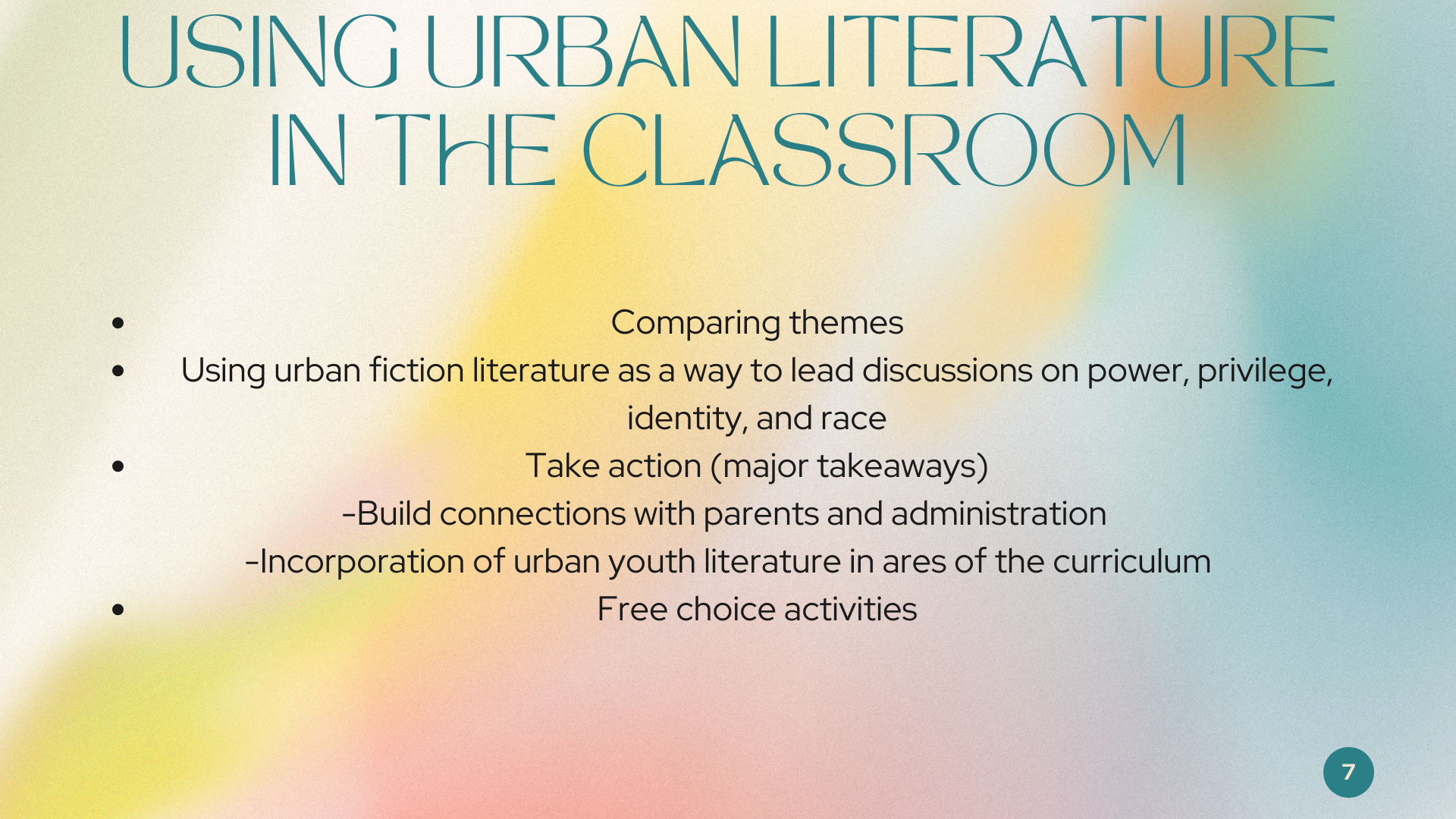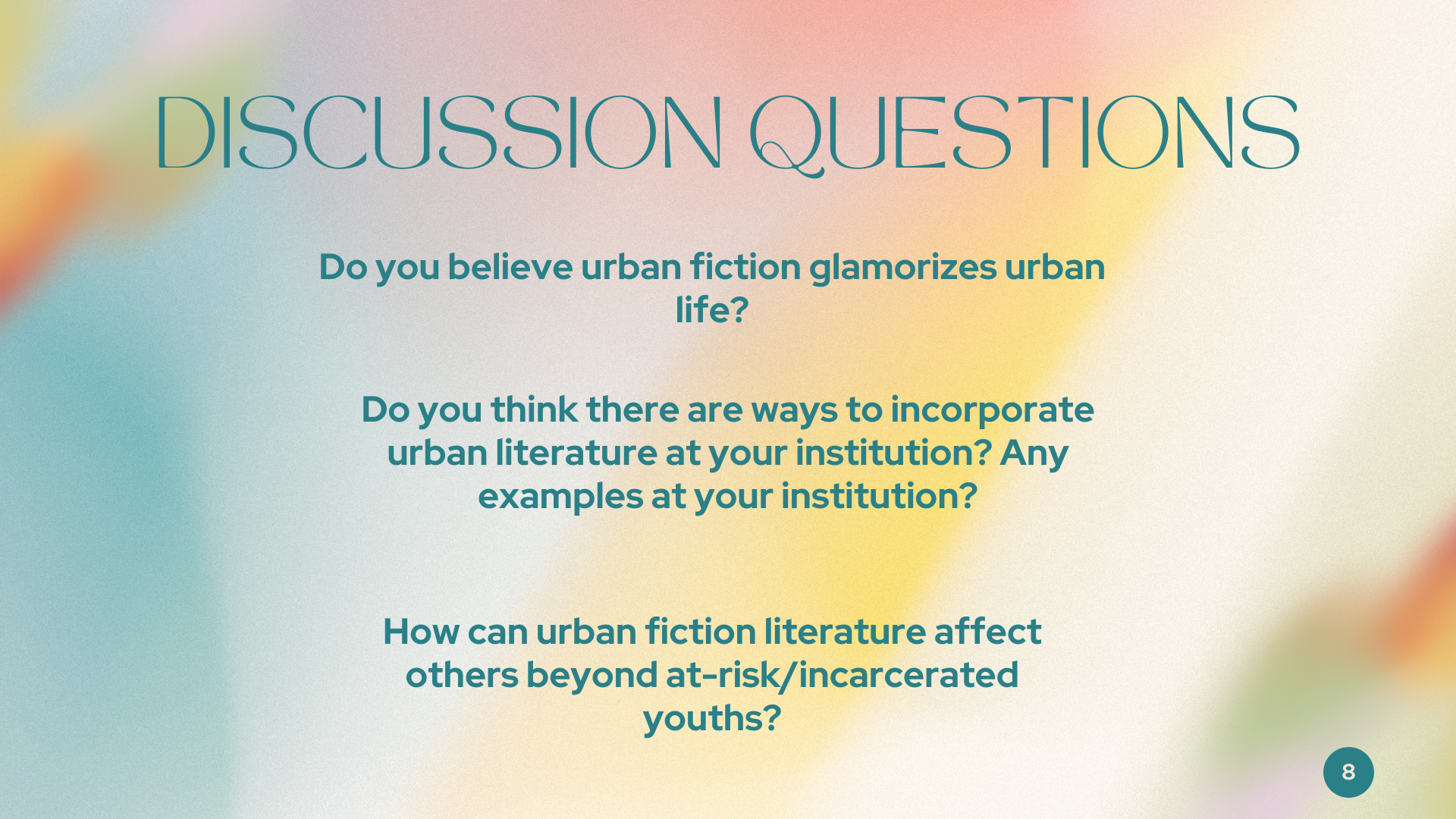This project was conducted as part of the CIS 650 (Applying Diversity Leadership Theories and Praxis) class during summer 2023 that involved assessing the web information (and more) provided by the Kingsley Plantation property of the Timucuan Ecological and Historic Preserve located in Jacksonville, Florida with a focus on African American populations. On this page, I discuss my presentation for CIS 650 on the article "Using Urban Fiction to Engage At-Risk and Incarcerated Youths in Literacy Instruction" by Stephanie Guerra. Although this particular group isn't my direct focus group, I gained a lot of insight into how it could apply to the Black youth I'm trying to reach in my community. Although Guerra specifically addresses the impact of Urban Fiction on at-risk/incarcerated youths and others, I believe that diverse youth literature featuring diverse stories and characters can impact the youth and others. Adults exposing Black children to diverse stories, exposes themselves to those stories as well. Another aspect that was beneficial for my project was the evaluation process for urban fiction. Although I do not use the same questions, it helped form my own questions while selecting books for my story time program. The implementation of urban fiction helped me form relevant and thought-provoking discussion questions for the readers in the reading group.
During the presentation, some of my colleagues expressed their discomfort with the words "urban" and "ghetto". Their concerns come from the negative aspect that comes with using those words. This article was written in 2012, so while it is still modern there have been some societal shifts. The more appropriate phrase to discuss this topic is low-income areas or communities. Also, there was one particular discussion question that garnered the most responses from my colleagues. The majority of my colleagues believed that urban fiction does not glamorize urban life. We all agreed that urban fiction literature typically shows the reality of consequences, while still getting the readers attention.
Memo of Relevance: Article Critique and Review
-Name of reviewer: Mia McNair
-Article’s bibliographic information:
Guerra, S. F. (2012). Using urban fiction to engage at-risk and incarcerated youths in literacy instruction. Journal of Adolescent & Adult Literacy, 55(5), 385–394. https://doi.org/10.1002/jaal.00047
-Keywords: Urban Fiction Literature, At-Risk Youth, Incarcerated Youths, Youth Literacy
-Purpose of the article:
Guerra develops an aid in selecting urban fiction to appeal to at-risk and incarcerated youths. Guerra addresses the challenges in the utilization of urban fiction in the classroom, how to choose the right books, and how to implement urban fiction in the classroom.
-Theoretical/Practice-Based frameworks:
Guerra looks at the best practices for engaging at-risk and incarcerated youths to come to her conclusion that urban fiction can generate interest in reading. Based on studies conducted on how to engage reluctant young male readers the best practices is asking what their interests are. Many young males were interested in topics that are represented in urban fiction literature. Guerra also analyzed the best practices for engaging minority youths in literacy instruction. The best practices found were having teachers be culturally sensitive and use their performance styles of ethnically diverse students to relate to their diverse students. Scholars that practice hip-hop based education use lyrics from the hip-hop genre to reach students.
-Research approaches/methods/methodological frameworks:
Guerra gathered 100 urban fiction titles and used three questions to evaluate the appropriateness of them. If the title had a yes for 2/3 questions then it would be deemed appropriate. The three questions are:
1. Does (one of) the character(s) ultimately prevail in doing what is right for the people around them?
2. Does (one of) the main character(s) grow in self-understanding?
3. Was the overall tone of the book one of hope or possibility rather than despair, egotism, or anger?
-Strengths (significance) of the article:
This article gives a set of questions that can be used by teachers to select appropriate urban fiction literature for their classroom.
-Weaknesses (limitations) of the article:
A major weakness I found in this reading is the usage of the word "ghetto". Although this article was written in 2012, it might limit the amount of people that this article can relate to with using that term.
- Identify ONE key takeaway in terms of INFORMATION ACTIONS for your DIVERSE POPULATION:
This relates to the Black youth that I want to reach by the method of which she selected books. Her framework of questions can be modified to fit my specific diverse population.
- From the reading, write down at least ONE outcome(s), small incremental step(s), valuable tools and strategies you might suggest for your colleagues to take back to be implemented within their libraries, archives, museums, or other work system.
The research method used by Guerra can be used to evaluate what books are used in the story time program and what books are put into our book store.
- Important references in relation to student’s areas of interest (course project):
Bean, T., & Moni, K. (2003). Developing students’ critical literacy: Exploring identity construction in young adult fiction. Journal of Adolescent & Adult Literacy, 46(8), 638–648.
Foster, M. (1995). African American teachers and culturally relevant pedagogy. In J.A. Banks & C.A.M. Banks (Eds.), Handbook of research on multicultural education (pp. 570–581). New York: Macmillan.
Gay, G. (2000). Culturally responsive teaching: Research, theory and practice. New York: Teachers College Press.
- Ideas and relationship of article to student’s areas of interest (course project):
The idea of using different books to compare themes can help with my story time program. Choosing books that discuss a topic from different perspectives can help enhance the readers understanding of the topic. Although I'm not using urban fiction for my story time program the books chosen can be used to discuss power, race, and identity.
